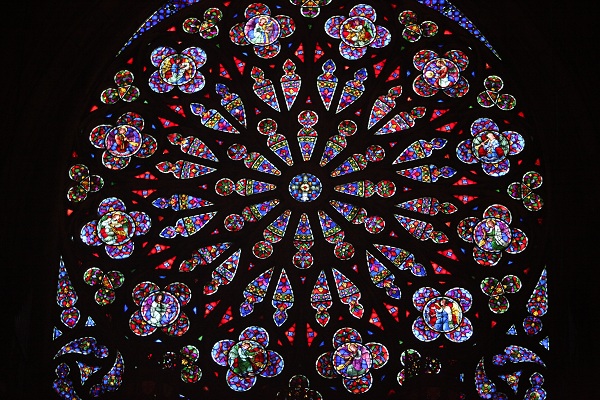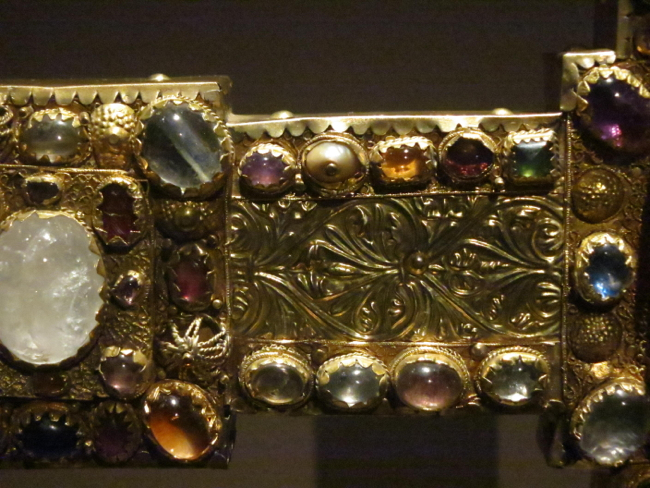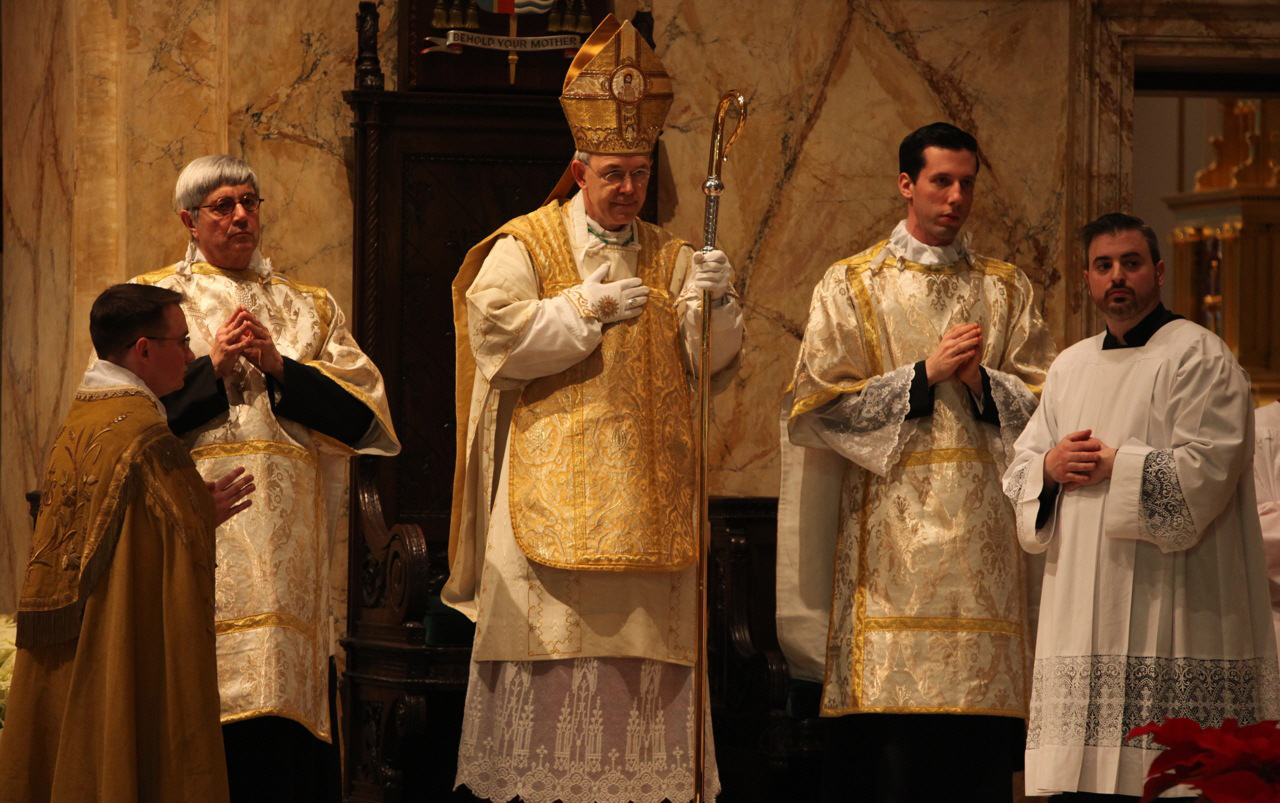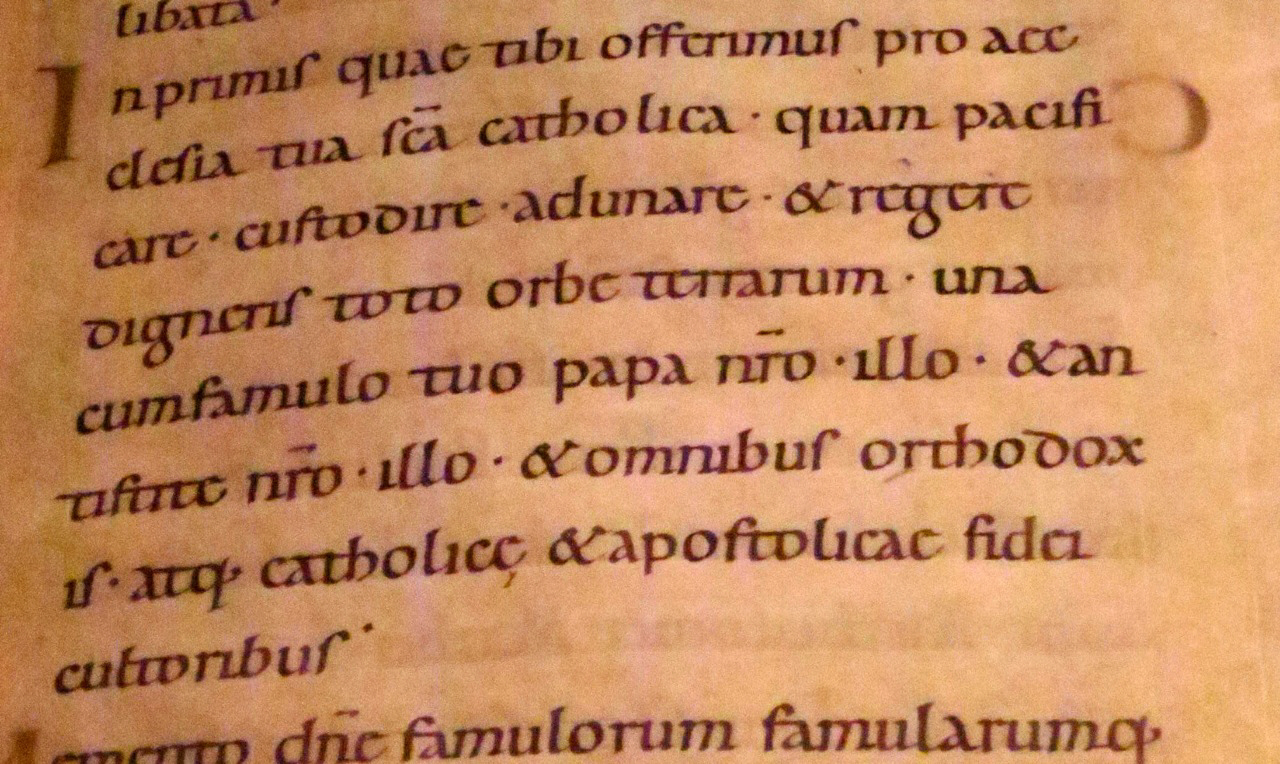Dr. John Rao delivered this presentation at the reception following the Solemn Requiem Mass for Msgr. Barreiro on Saturday, November 15 at St. Mary’s parish, Norwalk CT. We are grateful for his remarks!
A Priest According to the Order of Melchisedech
By Dr. John Rao
“If you are an idiot before you are ordained”, a priest whom I knew, now deceased, regularly told the seminarians that he taught; “you will be one afterwards as well”.
Some years ago, I went to the wake of a well known priest of what seemed to be an ingrained, ornery, pre-ordination temperament from the Archdiocese of New York. The late Fr. Benedict Groeschel opened the gathering—attended by an enormous number of clergy and laity—by stating quite authoritatively: “You all know that this man was a priest; and if all priests were like he was the Church would now be in wonderful shape”.
Indeed, we all did know what he meant, and it was accurate also because his naturalorneriness continued in his hundred percent priestly existence after ordination, but then with respect to anything that stood in the way of his happily, fully, and immediately doing what to him was not only his clerical duty but greatest joy. I remember the cleric in question shaking his head sadly when dealing with obstructions caused by a fellow member of the First Estate that he did not believe to be pastorally fruitful. “I learned long ago not to interfere in another man’s priesthood”, he regretted in my presence. And the crowd at the wake was there out of loving gratitude for his own brilliant priesthood, served by an earthly orneriness that had been transformed in Christ.
Meditating on both idiotic and ornery natural characteristics gives me my starting point for remembering our dear friend Monsignor Ignacio Barreiro-Carámbula, who, in his pre-ordination existence, possessed neither the one nor the other. He was, on the contrast, a man whose personal natural background offered him many gifts which—taken up and transformed through the grace of his priestly vocation—-gave to his priesthood a sophisticated shape in general, and an understanding of the problems of what the title of an old radio program of Dr. William Marra called “The Drama of Truth” in particular. Nature, Supernature, and Drama of Truth: it is these three themes that I want to use in order to recount what I know of the life of the extraordinary person whom parishoners here also came to know in his last years.
Everyone is aware that Monsignor was born in Montevideo in Uruguay, but not all of you may know that his “natural” background was a noble one. His family passed on a title from the Spanish Government, which his brother holds, but what I really mean by noble is what this signifies in the fullest sense of the word. A noble individual signifies a “known” quantity; a man conscious of who his ancestors were, what they accomplished, and the responsibility that he now has, in consequence, to live up to the deeds and the reputation that they have handed down to him. A truly Catholic noble family makes certain that its offspring take seriously their duties to protect the religious, political, and social order that honored their forbears, and that they have the education and personal military-like discipline allowing them to grasp and carry out those obligations fully and properly.
This sense of duty, excellent education, and disciplined soldierly spirit were all passed onto our friend and guided him on the purely natural plane. What I want to mention about that now, however, concerns solely his response to his vocation. Monsignor told his friends that he always felt a pull to the priesthood. Nevertheless, a definite family preference, reaffirmed, personally, by his own sense of horror over the revolutionary direction down which Uruguay was headed and confirmed by his relief over the military’s halt to it led him to see a need for a secular fulfillment of his duty to the common good. He cooperated with this earthly vocation at first by openly supporting the military’s traditional policies among his comrades at his university, and then, after earning a degree in Civil Law, joining the nation’s Foreign Service. He would come to be fluent in English, French, and Italian, alongside his native Spanish, in the course of this part of his vocational life and beyond.
It was at the very end of Monsignor’s service as a member of the Uruguayan delegation to the United Nations from 1978-1983 that I met him, at the Sino-American Amity Fund on Riverside Drive in New York City. This historic organization, guided at the time by Fr. Paul Chan, S.J.—-another “priest according to the Order of Melchisedech”—-accompanied its defense of Chinese Catholicism by giving shelter to a priest or two fighting for the Catholic Magisterium in those early and particularly dreadful postconciliar decades, as well as by providing meeting rooms for a number of academic and devotional societies engaged in the same conflict.
Our encounter was at a gathering of the then flourishing conservative-minded New York Catholic Forum. It was here that I also came to know many other full-fledged New York Traditionalists, including Stuart Chessman and the future Fr. Richard Munkelt. The latter, who had not yet even dreamed of entering seminary, became Monsignor Barreiro’s closest friend. All three of us got to know more about one another at dinners at Fr. Munkelt’s apartment on the Upper East Side, during which the now former diplomat’s ability to converse on any topic from ancient Roman coins to current day members of both branches of the Spanish Aristocracy, to the quality and quantity of whiskey that it was appropriate for Catholic gentlemen to consume all shined forth.
It was Fr. Munkelt who reminded me that alongside the continued attraction of an already once perceived higher calling and the disappearance of the family obstacle to following it that I recollected, Monsignor himself saw a third reason for finally heading down the clerical route. New revolutionary waves were rocking the military regime that had nurtured the more traditional values that his ancestors valued, and the idea of continuing diplomatic service to a regime that dpromote left wing goals was loathsome to him. Disciplined, intelligent, militant service to the greater common good—that of the work of Redemption—was the future to which he was being inevitably called.
The fact that this involved his entry, in 1983, into the New York Archdiocesan Seminary in Dunwoodie was not a surprise. Our retiring diplomat had come to love our quirkly city. Moreover, its training ground for priests had gradually improved—certainly compared to many, many others wedded to an ever-evolving Catholicism in the United States and in South America—during the tenure of Terence Cardinal Cooke (1968-1983). Monsignor took the plunge, fought through whatever remained painful in his seminary years with a noble’s soldierly fortitude, and was ordained a priest by JohnCardinal O’Connor on November 14th 1987 in St. Patrick’s Cathedral.
While working in a parish on the Upper West Side, Monsignor continued his association with the whole of the orthodox Catholic world in New York City. These included the already mentioned conservative Catholic Forum. More important for his own future was his association with the downright Tradiionalist focused Roman Forum, which was founded in 1968 by Drs. Dietrich and Alice von Hildebrand, Dr. William Marra, and the Rev. Dr. Vincent Micelli, S.J., and whose Director I myself became in 1991. Most significant of all was to be his concern for the Pro-Life Apostolate, whose cause the newly ordained priest supported with time and zealous passion.
But at this point we must move forward to the second part of my argument: supernatural grace’s enhancement and transformation of one’s natural character and strengths. In Monsignor Barreiro’s case, this meant his becoming a still more rounded and refined lover of all things beautiful. What stands out most in my memory about him in this regard from the intellectual standpoint is a discussion that I had with him when I was engaged in a study of Werner Jaeger’s massive, three-volume work on Greek education, Paideia: The Ideals of Greek Culture and also his Greek Paideia and Early Christianity. The first of these works showed how the crucial classical contribution to Western Civilization is built upon the passion for learning what “the Beautiful” really fully means, how men can gain possession of it, and why it also forces us to understand what is “Good” and “True” to reach that goao. The second teaches how many of the Church Fathers grasped the fact that Christianity offered the final piece of the puzzle; that is was only by becoming part of the Mystical Body of Christ that men could build an honestly beautiful civilization, where everything natural fit together in the proper hierarchy of value, aiding them, as much as was possible in a world of sin, to eternal possession of the True, Good, and Beautiful, through the Beatific Vision.
Monsignor had always been attached to the Traditional Liturgy, but, now, engaged in the practical realities of parish work in a world that was falling farther and farther away from any connection with all three of these essential pillars of a true civilization, he understood more than ever, why its return to the center of the life of the Church was absolutely necessary. Good theologian that he was, he knew that the Novus Ordo was valid. Still, as von Hildebrand said in 1970 when committing the Roman Forum to the restoration to primacy of the entirety of the Traditional Liturgy, he recognized that it was hopeless as a tool for creating that beautiful kind of earthly community that could aid us in every natural way to cultivate a desire for the possession of Beauty, Goodness, and Truth for all eterniy. Any well meaning attempt merely to “dress it up” simply drew attention to all of its other inadequacies, with its insistence on shaping worship on the perceived emerge“needs” of the all too corrupt environment around just being its central flaw. The Traditional Liturgy, with its fixed focus on the Creator God who knew best what nature was intended to be, allowed us properly to scoop up all of the literary, musical, artistic, and generally sacred longings of our fallen earthly souls to be guided, harmoniously, from above and not from below, and then to use created nature to help draw all of us still further upward.
Because of Monsignor’s love for his parishoners in New York, he tried his best with the tool he had available to him as a diocesan priest. But very quickly, after the establishment of the Ecclesia Dei communities in 1988 and afterwards, with the promise of at least a partial freeing up of the Traditional Rite, he courageously explained his position to Cardinal O’Connor. He joined the newly created Fraternity of St. Peter and left for an introduction into the life of this community in their recently opened seminary in Wigratzbad in Germany. I visited him there soon after his arrival and realized that his “charism” was not that of the monastic existence in which he was for the moment immersed in Wigratzbad. He never had anything of the monk about him, and needed to cultivate his mind to pass on the desire to raise all of nature to the greater glory of God in some pastoral capacity.
Luckily, he soon gained permission to move to Rome for further studies. In 1991 he entered the University of the Holy Cross in Rome, obtaining his license in 1993 and his doctorate in Theology in 1997 with a dissertation on The Experience of God and of the Faith in God according to St. Thomas Aquinas. While doing his studies, he was able to say a public mass at the Church of San Luca e Martina at the Forum in Rome and undertake some pastoral work. He lived at the Church of Santa Maria della Scala until after his doctorate, joined there in 1992 by the future Fr. Munkelt, who had by this time begun his own studies for the priesthood and the doctorate.
The Roman Forum began its Italy program in Gardone Riviera in 1993. Our first chaplain could not help us the following year, and the obvious candidate to replace him was Monsignor Barreiro. He served the Forum in this capacity from 1994 until illness prevented him from doing so, at which point, he was succeeded by his close friend, now a priest, Fr. Munkelt. After his departure from the Fraternity—about which a bit more later—he was named the first Director of the Human Life International Rome Office in September of 1998, and obtained his title of Monsignor, as a chaplain of His Holiness, from Pope John Paul II in 2004. Monsignor offered the Mass of the Ages in a number of places throughout Rome in those years. He enjoyed serving as chaplain also for a group of equally militant minded young Romans engaged in political action for the goal of building the Social Kingship of Christ. Monsignor took part in every pro-Traditionalist event he could, travelling not just in Italy and other parts of Europe but also the United States as well.
Monsignor lived just a fifteen minute walk away from the Human Life International office, both residence and place of work being very close to the Vatican. The apartment and the office became wonderful gathering places for all sorts of people interested in the Pro-Life and the Traditionalist Movement. His home, filled with fine books and art works, was a place where one could meet literally anyone from archaeologists to visiting patristic scholars and have fine conversation on topics, once again, ranging on anything from the Dead Sea Scrolls to St. John of God and the glories of the Carlist Wars in Spain. All this was accompanied by good food—I know, because I cooked much of it—-and good wines that more well-heeled fellow travelers brought with them.
Among the visitors to office and/or home was Roger McCaffrey, who was working very closely in those years with Una Voce leaders like the great Michael Davies, and who is here with us today. So were Monsignor’s friends from the Roman Forum, alongside dozens of sympathetic cardinals, bishops, priests, academics, and students from all continents. A special favorite of mine was Fr. Gabriel Diaz-Patri, an Argentinian through whom one could meet the few people in Rome whom Monsignor himself did not yet know.
One of the outstanding groups of Traditionalist Catholics whom I encountered through this cosmopolitan “salon” were those who took part in the Hispanic Traditionalist network centered round Dr. Miguel Ayuso from the Pontifical Academy Comillas in Madrid. His influence, and that of the organizations he runs, extends not just through Mexico and Latin America at large, but also to the non-Spanish speaking European world as well, including such fine men as Professor Danilo Castellanofrom the University of Udine in Italy, and Bernard Dumont, the editor of the journal Catholica, in France. Monsignor’s militant young disciples from Rome were also often present, especially his devoted Secretary, Serinella Verucchio, who flew with her husband to New York for just a few days to visit him before his death in 2017.
That brings me to the third part of this talk: Monsignor’s truly Catholic illustration of understanding the reality and complexities of “The Drama of Truth”. Dr. David White once gave a lecture for the Roman Forum in Gardone Riviera on this subject, in which he explained the Greek discovery of the fact that the fullness of drama required two things: tragedy and comedy. Tragedy was needed to identify man’s sense of broader, higher, and more important actions than quotidien reality, and the inherent problems connected with carryint them out; comedy, to expose the human foibles that often cause each of us to stymie our own actions. After all, it is the very man who entertains and works for something grand—-amidst a sea of inherent troubles—-who slips on a banana peel that he himself has carelessly tossed on the ground before him.
Age was one reason that Monsignor readily accepted the problems of the general drama of life when becoming a priest, just as it was for me, marrying at forty, the same age that he was at his ordination. At forty, you are pretty much surprised if anything goes right at all. In any case, his acceptance of reality came with a wonderful comic sense. When telling us that his family had a noble title, he added that it came from involvement in the slave trade, about which at least his generation of Barreiro-Carámbulas were not terribly proud. He described in comic detail the unsanitary way in which the morning bread would by thrown by a less than savory truck driver onto the pavement outside his home in Montivedeo, to be picked up sometimes by the gardener, with heaven knows what on his fingertips, only to be brought out by the family maid in white gloves using prongs to put it on their plates. Familiar as he was in the United States with the Andy Griffith Show and Barney Fife, he told us that he, too, had his tiny Foreign Service pistol with its one bullet to protect himself in the case of left wing assault. He also was amused to be reminded later in life of the pride he took while a layman in his awareness that “women find me attractive”.
Obviously, his comic sense did not disappear upon entering the priesthood. He was never cruel when discussing the world around him, just amusing. I loved his recounting of the antics of some of the friars at Santa Maria della Scala and the acrobatics of eating a three course meal in fifteen minutes, as well as one of their more fascist-minded member’s recitation of poems in praise of the Carabinieri’s efforts to keep the Left in place. One of my favorite memories was his sitting me down one day over Campari Soda and peanuts and telling me of what he would do if he were informed that he had a terminal illness with only a few months left to live. He said that he would set up an Apostolate to Assassinate Heretical Bishops. They would be kidnapped and given ample time to repent, before being justly dispatched for the irreparable damage they had already done.
When agreeing to become the Roman Forum chaplain, he made me promise to take him on a trip beforehand to see the churches of Ravenna—but also, for historical reasons, the tomb of Mussolini as well. I had to promise that he would not have to eat polenta as well, because he absolutely detested it. His recounting of his visit to the local pastor in Gardone in the second year of his chaplaincy to ask permission for our use of the parish church for the Traditional Mass (we had been saying it in the hotel) was also a gem. Those were the days of what were called “celebrats”, issued with rarity to prove that a priest had permission to engage in such subversive activity. “I will explain to him that my Bishop gave me the authority is in Brazil and there will be no further questions as to why I am here and not there”, he explained. He came back doubled over in laughter, when it transpired that the Pator knew Portuguese fluently, had spent years in Brazil, and knew everything imaginable about the diocese in question imaginable. “The Drama of Truth”, another New Yorker might add”; “ya know what I’m sayin’?”
Monsignor had many many friends who could joke about some of his more comical personal characteristics. He had a look that he would throw someone when he was miserable and wanted him to know it—as he did to me in Wigratzbad, hiding behind a pillar so no one else could see that he was utterly incapable of singing a note of Sext and Compline. He had a most amusing mumble of unpredictible length which proceeded many of his pronouncements. Almost invariably, when he fully and enthusiastically agreed with something you had just said, he would mumble and then shout “No, no!” , so that you presumed he had rejected it entirely. He would make very pronounced gestures when speaking or preaching so that one had to make sure there was nothing breakable around him to hit and smash with his arms. There was some sort of condition that he had that required him to compose himself deliberately when turning from one direction to another and taking off—which he could then do at great speed. His sense of propriety, combined together with this deliberation-followed-by-speed, created some of our most memorable memories. Once in the Piazza Santa Maria in Trastevere, shocked by the scanty dress of some young ladies whose affect on the friends accompanying him he feared, he made one of his studied moves, put his head down, took off like a panzer division in Northern France in 1940—- and ran head on into an equally young lady wondering what the priestly visit was all about.
Unfortunately, Monsignor did have enemies: some, because they were totally opposed to what they knew he believed, which was at least an honest reason; some, because “if you are an idiot before you become a priest, you will be one afterwards as well”. And some could even use the characteristics that endeared him to his friends to mock him. For this and for many other reasons, I never believed he received the due respect for all his dedication, his soldierly discipline, his energy, and his intellect.
Monsignor was fully aware of this reality as being part of the Drama of Truth. On the other hand, the reality in this case was shaping the general tragedy of the Church in our times, for which he suffered deeply. I remember the sorrow Monsignor felt when telling us in his office of yet another horrible appointment of someone whom he knew would add another nail to the coffin of the already badly wounded postconciliar Church.
Generally, Monsignor was prudent in dealing with the tragedy of the ailing world around him, as was well displayed in his ability to keep as quiet as possible regarding his Traditionalism while in Seminary, so as not to jeopardize the greater good of his Ordination. He was as wise as a serpent when, in 1995, on the 450th anniversary of the opening of the first sitting of the Council of Trent, he decided that the Gardone Summer Symposium had to take a trip to this nearby city with him then having the joy of saying a Mass on the altar used by the Council Fathers in the Cathedral. This was not a propitious time to attempt carrying out such a coup, so I wondered how we would pull it off. “By not saying anything to anyone about what we intend to do”, was the answer. It worked, and with a moving pastoral result, as we shall soon see.
On another occasion, his acceptance of the need to find inventive ways of dealing with tragic reality was, once again, downright comical. They reflected Napoleon’s answer to a question regarding how he defined his theory of strategical action. “One engages battle”, he said, “and then sees what happens”. We decided to repeat our Cathedral Coup the year after the Trent success on a visit to Pavia, one of whose purposes—Monsignor’s first—being the celebration of a Traditional Mass on the tomb of St. Augustine in the Church of San Pietro in Ciel d’Oro. An apparently untransformed but ornery sacristan “welcomed” us. He shook his head vigorously “no” when Monsignor announced his attention. “No one says Mass on that high altar”, he said, pulling us toward the parish picnic table. Monsignor apparently thought that it was panzer time in Northern France again. “But I only say the Traditional Latin Mass, and the ceremonies don’t allow it to be said on your regular altar”. “Well then”, the ornery sacristan unexpectedly responded, suddenly transformed; “I guess you really have to use the Augustine altar”. Grace had triumphed over nature.
“First time in my life I have been favored for being an obscurantist”, Monsignor triumphantly whispered to me. We visited the famous Certosa monastery in Pavia immediately afterwards. Michael Davies was with us and asked the monk giving us our tour whether they celebrated the Traditional Latin Mass there. “No”, he answered, taken somewhat unback. “Well they are doing it on St. Augustine’s altar in town”, he responded. “Better jump on the bandwagon before it is too late!”
Probably the only misplayed panzer move involved the timing and carrying out of Monsignor’s break with the Fraternity, which took place in Rome and was rather tense. Thankfully, no one on either side wanted to cause any problem that might hurt the common cause. And, here too, Monsignor showed another one of his fine characteristics: that of courageously approaching those with whom he had had a problem so as not to let the difficulty go on forever. One Sunday, after Mass in Rome, I saw him charging, head down, out the door to what to me was an unknown location. When he told me the name of the person he was going to see I almost choked. “You cannot actually be going there, are you?” I cried out. He mumbled for a bit. “No, no, no”, he then answered, meaning “yes, yes, yes”. “Never uselessly multiply enemies”, he taught me, marching off to reconcile himself, a priest with a layman, and that afternoon with one of his most vocal foes.
But, then again, everything he did was pastoral in one way or another, and he did what he did well because he liked people, he welcomed them, he listened to them, he was honestly happy with good things that happened to them and was super solicitous in helping them to ensure future good events. He was ready with help for whomsoever needed it. He would take off in the middle of the night, like a soldier in a trench in the First World War, for whatever destination duty demanded, be it a hospital for the sake of the sick, or a private home to hear the confession of someone who believed felt himself to be in sin: even in the middle of the night. Knowing that my father-in-law was near death a good number of years ago, he begged my wife to tell him the moment that he passed way. That moment turned out to be 3:00 A.M. Rome time, and Monsignor got out of bed, vested, and said Holy Mass for him “on the double”. What else could a disciplined, soldierly aristocrat do for a friend?
Perhaps the most moving “historical” pastoral action that Monsignor was ultimately responsible for from start to finish concerned that 1995 Mass in Trent. During its celebration on the “Council Altar”, all of us participating heard sobs from the back of the pews. They came from a very elegantly dressed elderly woman carrying shopping bags with her. When the Mass was over, Monsignor and a few others, myself included, went to ask her what the problem was. “I am from Trent”, she said, “and had just finished making my purchases at the weekly market here in the center. I got on the bus to go home and a voice told me to come to the Cathedral where ‘I would find what I had been looking for for so long’. And the voice was right! I thought this Mass did not exist any longer!!’”. Monsignor assured her of what her eyes had seen and her ears had heard. He told her where it was that what she desperately wanted—-and needed, because it was beautiful and aimed the mind, soul, and body upwards towards possession of eternal beauty in a world tempting us to deny its existence—-could be found the following Sunday.
We were all shocked when we heard of Monsignor’s illness, but I remember that his room in the rather lovely facility at which he first was treated in Rome had swiftly become yet another Traditionalist Command Center. And this happened at an extremely useful time; that of a conclave, but the one which, alas, ended with the election of Pope Francis and yet another dreadful act in the Drama of Truth.
That Drama had worsened by the time of Monsignor’s death. Still, I often wonder what he would think about the situation now, when, only eight years later, it is even worse; when the entire goal of our civilization to understand and to take possession of the beautiful has been attacked as far as it possibly can be; when Reason, along with Faith, have both been retired as tools to reach that goal; when an arrogant and stupid Nihilistic Criminal Ugliness has been enthroned as the height and goal of all existence.
Of course Monsignor would recognize the tragedy of it and the horror of the complicity of the clergy with the the Reign of Nihilistic Criminal Ugliness. But I don’t think that he would feel as though there were much chance of being quiet about this disaster any longer, in the hope of some greater good emerging through such prudence. Instead, I think that in solid Piazza Santa Maria in Trastevere fashion, he would mumble for a half a minute, say “no, no, no”, turn delibrately, and then, with a “yes, yes, yes” fervor take off across Northern France for a frontal assault on the diabolical enemy. After all, if you are a lion before you are ordained as a priest, you will be a lion afterwards as well.
Please pray for this good and faithful friend, good and faithful priest, good and faithful soldier of Christ the King.






















